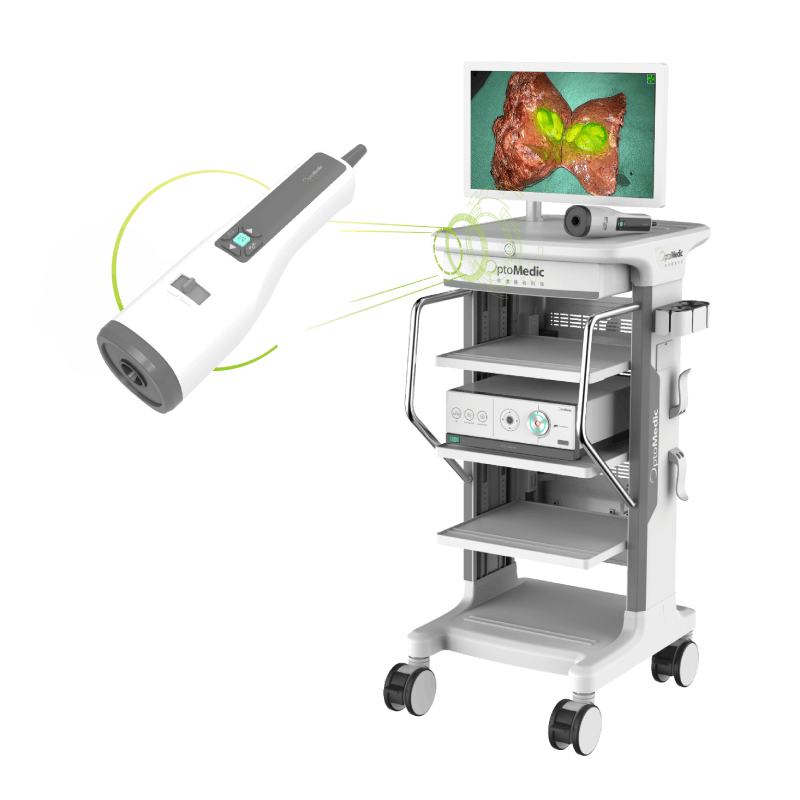
The FloNavi Open Field Fluorescence Imaging System is an imaging system used in hospitals for capturing and viewing fluorescent images for the visual assessment of blood flow, as an adjunctive method for the evaluation of tissue perfusion, and related tissue transfer circulation for use in imaging during various surgical procedures. The FloNavi Open Field Fluorescence Imaging System includes an Imaging Head, an Image Processing Unit, and power supply cords. The Imaging Head may be either hand-held or attached to a mechanical arm and provides illumination of the regions of a patient\'s body to be observed with near infrared light to excite ICG fluorescence. Alternatively, the Imaging Head provides white light illumination of the regions of a patient\'s body to be observed for color imaging. The cameras in the Imaging Head capture the fluorescent image under near infrared illumination or a color image under white light illumination. The Image Processing Unit receives the video signal from the Imaging Head and processes and outputs the video image to a medical grade video monitor and/or video recorder. Adjustments to the operation of the FloNavi Open Field Fluorescence Imaging System are possible through switches at either the Imaging Head or the Image Processing Unit.

Sentinel lymph node tracing of breast cancer
Autofluorescence for parathyroid gland
Lymph node mapping
Gland perfusion
Liver segments visualization - Anatomical liver segmentectomy
Tumor Identification - Accurate display of tumor location, margin, and microsatellite
Biliary tract visualization - Complex biliary tract visualization and wound repair after hepatectomy
Liver transplantation - Assessment of the vascular and biliary duct anastomosis after transplantation surgery